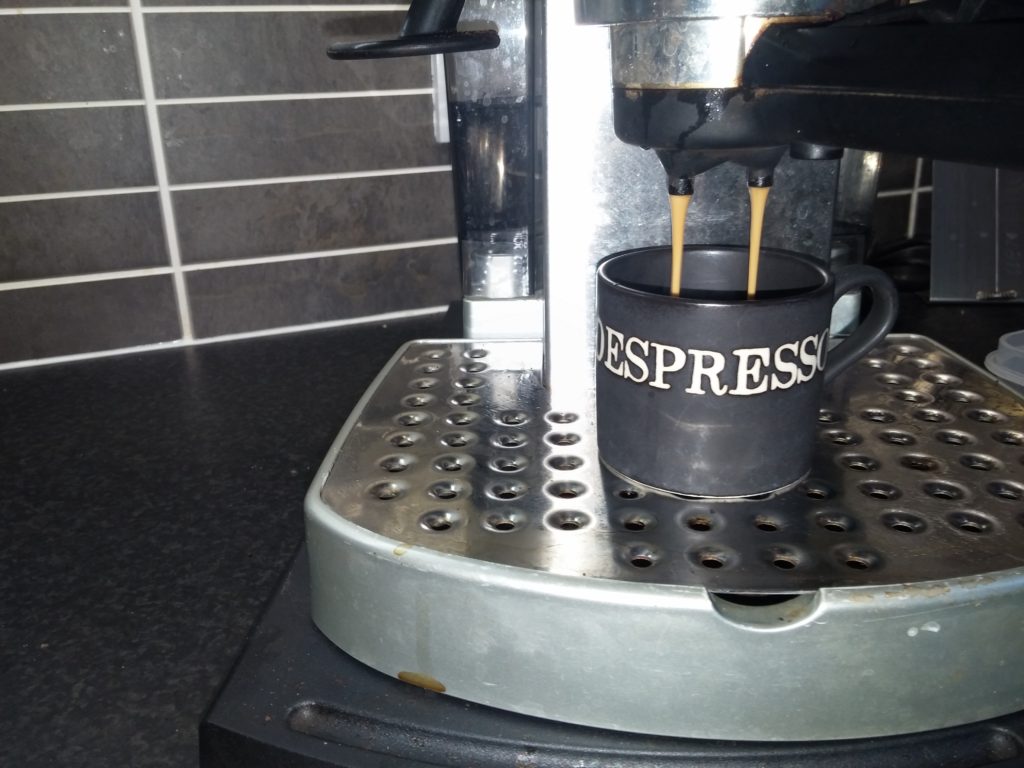When shopping for a home espresso machine, it is easy to feel bombarded by the numerous brands, functions, and styles of machines. Here are a few things to keep in mind while shopping!
For me, one of the main features I prefer is a manual/traditional steam wand, meaning that technique is needed to properly steam milk.
 Though, for someone who does not have milk steaming experience, or doesn’t want to learn how, there are several machines that have steam wands that take advantage of a system that automatically aerates the milk and makes it perfect each time.
Though, for someone who does not have milk steaming experience, or doesn’t want to learn how, there are several machines that have steam wands that take advantage of a system that automatically aerates the milk and makes it perfect each time.
You could also use a hand held steam whisk and warm the milk in a microwave which can be a very fast way of producing frothy milk at home.
Another thing to look at is what the driving force is behind the espresso shots. Machines that are usually extremely inexpensive typically use steam pressure to force the water through the coffee grounds.
These machines do not produce what is known as “true” espresso, as the water is pretty much always way too hot for the coffee grounds, and can even burn them; creating a less than favorable flavor.
A pump driven machine with a high bar pressure is essential for pulling the best espresso shots.
While these inexpensive machines are good for someone just getting into coffee, anyone who is already into coffee will have a much better time with a pump driven machine. Of course there are other equally good systems for the machine to pull the hot water through the coffee grounds, but the pump driven variety seem to be the most common.
Something else to consider is how much work you want to do to make your latte. Machines such of the super-automatic variety will do everything for you at the push of a button, including grinding the coffee it is fed, tamping, and pulling the shots.
Whereas the semi-automatic ones still require you to grind and tamp your own shots, unless they have a built in grinder. While it is easier to have the machine do all the work for you, I prefer to use a separate grinder, tamp my own grounds in the portafilter, and steam my own milk. This way you have more control over the final coffee taste.
There are other types of espresso machines, such as ones that use a lever to generate force inside the portafilter to push water through, but that is a bit too much work for me, personally. But these look fantastic in a modern kitchen.
In the United States, the super-automatic type of machine called the Mastrena, is the kind used in the majority of Starbucks stores, and cost around $20,000 American dollars. Though, super-automatic machines can be purchased for much less.
Other factors to look at would of course be cost, amount of broilers, maintenance, and longevity. Most less expensive machines will have a single broiler that is used for steaming milk and pulling espresso, and while it works just fine, it will take a longer time to make a latte when compared to a machine with two broilers; one for steaming and one for pulling shots simultaneously, though a machine with a built in heat exchanger can accomplish the same thing with only one broiler.
The bulk of machines will really only require basic cleaning and descaling, but if you spend good money on a machine and something breaks on it, it is best to have it fixed by a company certified to fix it, instead of doing it yourself and risk breaking something.
There are a lot of companies that have deep roots in quality, such as Rocket, Rancilio, Gaggia, and De’Longhi, but even companies that are just getting into domestic espresso machines, such as Breville, Jura, Krups and La Pavoni are doing a fantastic job.
Espresso machines can wildly differ in cost, and of course as you climb in features, the cost rises as well. For those looking for a good espresso machine for home use, I really wouldn’t suggest spending more than $300 to $600, unless you have the money or really want a super-automic machine, you should be set.
Where cheap machines fail is usually when put to heavy use, the internal pumps wear out. They also tend to get clogged up more easily and require regular cleaning and descaling to keep them performing at their best.
